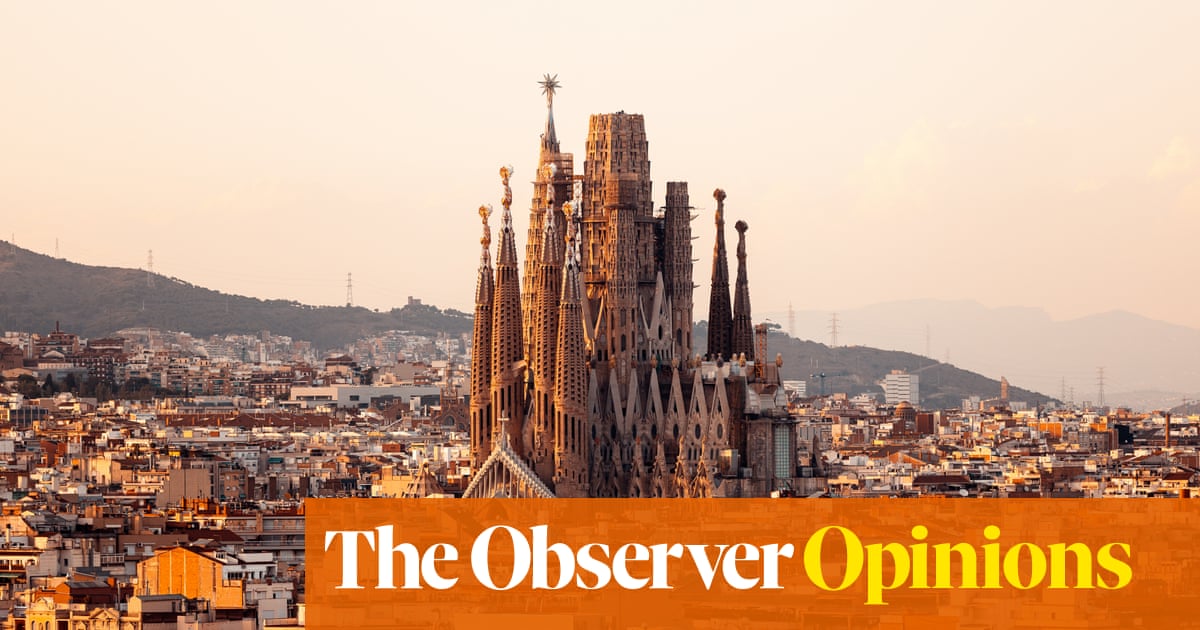Even if you’re not a person of faith, there are reasons to see Antoni Gaudí as a saint | Rowan Moore
TruthLens AI Analysis
The article presents an intriguing exploration of Antoni Gaudí's potential canonization, juxtaposing his devout life and artistic achievements against the moral failings of another artist, Eric Gill. This comparison not only highlights the complexities of art and morality but also raises questions about the criteria for sainthood and the legacy of artists.
Purpose of the Article
The piece seeks to prompt readers to consider the spiritual and moral dimensions of artists' lives, specifically through the lens of Gaudí's faith and artistic vision. By contrasting Gaudí with Gill, the author aims to elicit discussions about how we evaluate the worth of an artist's work in light of their personal behaviors. This comparison serves to advocate for Gaudí’s recognition as a saint while simultaneously critiquing the glorification of problematic figures like Gill.
Public Perception and Messaging
The article attempts to create a favorable perception of Gaudí, framing him as a figure of moral integrity and artistic genius. This can influence public sentiment towards the canonization process, garnering support from those who value spiritual contributions alongside artistic merit. Conversely, the discussion of Gill could provoke outrage or discomfort, potentially leading to calls for reevaluation of public art that glorifies morally dubious figures.
Information Omission
There seems to be an implicit critique of institutional responses to artists with problematic legacies, specifically regarding the BBC's handling of Gill's work. While the article touches on the protective measures taken with Gill's sculpture, it does not explore alternative perspectives on preserving controversial art or the complexities involved in that decision-making process.
Manipulative Elements
The article carries a manipulative quality, particularly in its stark contrast between Gaudí and Gill. By elevating Gaudí's virtues while condemning Gill's actions, the narrative could lead readers to an oversimplified moral dichotomy. This can evoke strong emotional reactions and affect public opinion, potentially skewing the reader's understanding of the broader context of each artist's work.
Credibility of the Article
The arguments presented, while compelling, rely heavily on subjective interpretations of morality and art. The lack of comprehensive analysis regarding the implications of canonization and the societal impact of recognizing Gaudí could affect the overall credibility. However, the author’s evident passion for the subject matter lends a degree of authenticity to the narrative.
Artistic Legacy and Societal Impact
By discussing the potential canonization of Gaudí, the article engages with a broader conversation about the role of art in society and how it can reflect or influence moral values. This kind of discourse could have implications for how future generations view the intersection of art, faith, and ethics, potentially reshaping cultural narratives surrounding artists.
Target Audience
The article likely appeals to individuals interested in art history, architecture, and ethical discussions surrounding public figures. It may resonate more with communities that prioritize moral integrity alongside artistic expression, particularly those with a vested interest in religious or spiritual topics.
Market and Economic Implications
While the article may not directly impact stock markets or specific economic sectors, the ongoing conversation about the legacy of artists can influence cultural tourism, especially in regions associated with Gaudí’s works. Increased interest in Gaudí’s canonization could lead to heightened tourism and investment in cultural heritage sites.
Geopolitical Relevance
In a broader context, the conversation about artists like Gaudí intersects with contemporary discussions about morality, legacy, and the values societies uphold. Given the current global climate of reevaluation of historical figures, this article contributes to an ongoing dialogue that is relevant to various societal contexts today.
The article likely does not utilize AI for its composition, as it reflects a personal narrative style and subjective analysis. However, if AI were involved, models like GPT could have influenced the structure and language, potentially steering the discussion towards a more polarized view of the artists mentioned.
In summary, the article provides a thought-provoking examination of Gaudí’s potential sainthood in contrast to Gill’s morally questionable legacy, while also inviting readers to reflect on the broader implications of morality in art. The credibility of the piece is somewhat compromised by its subjective framing, yet it prompts necessary discussions about ethics and legacy in the context of artistic achievement.
